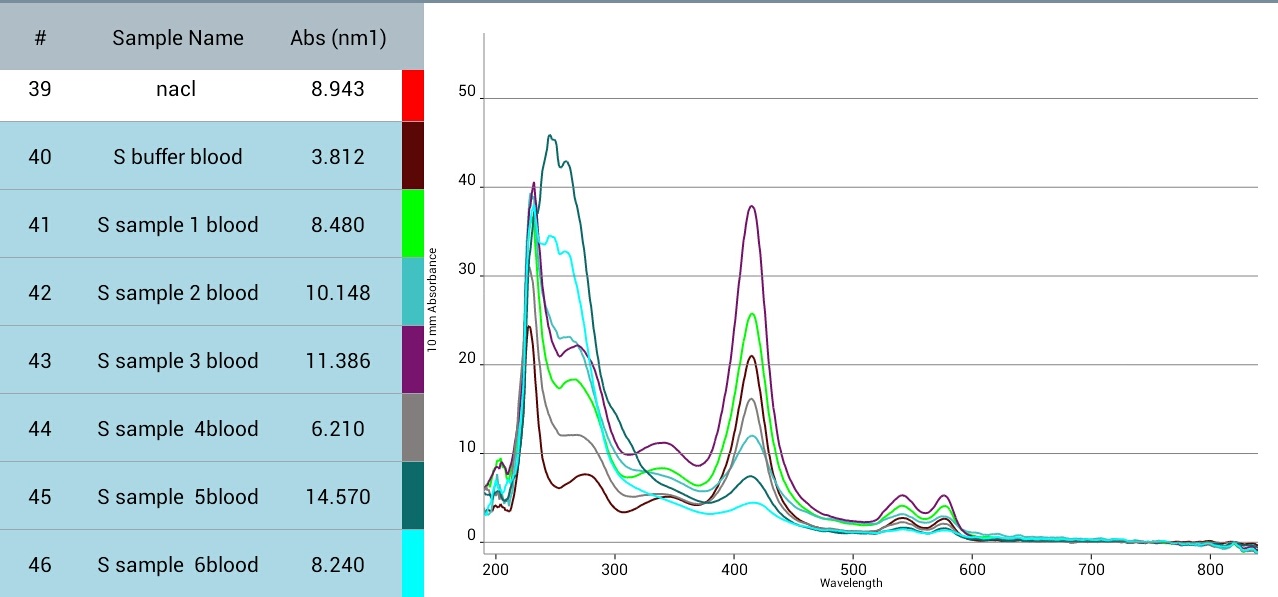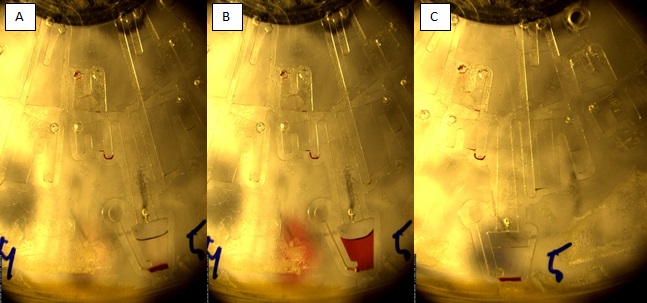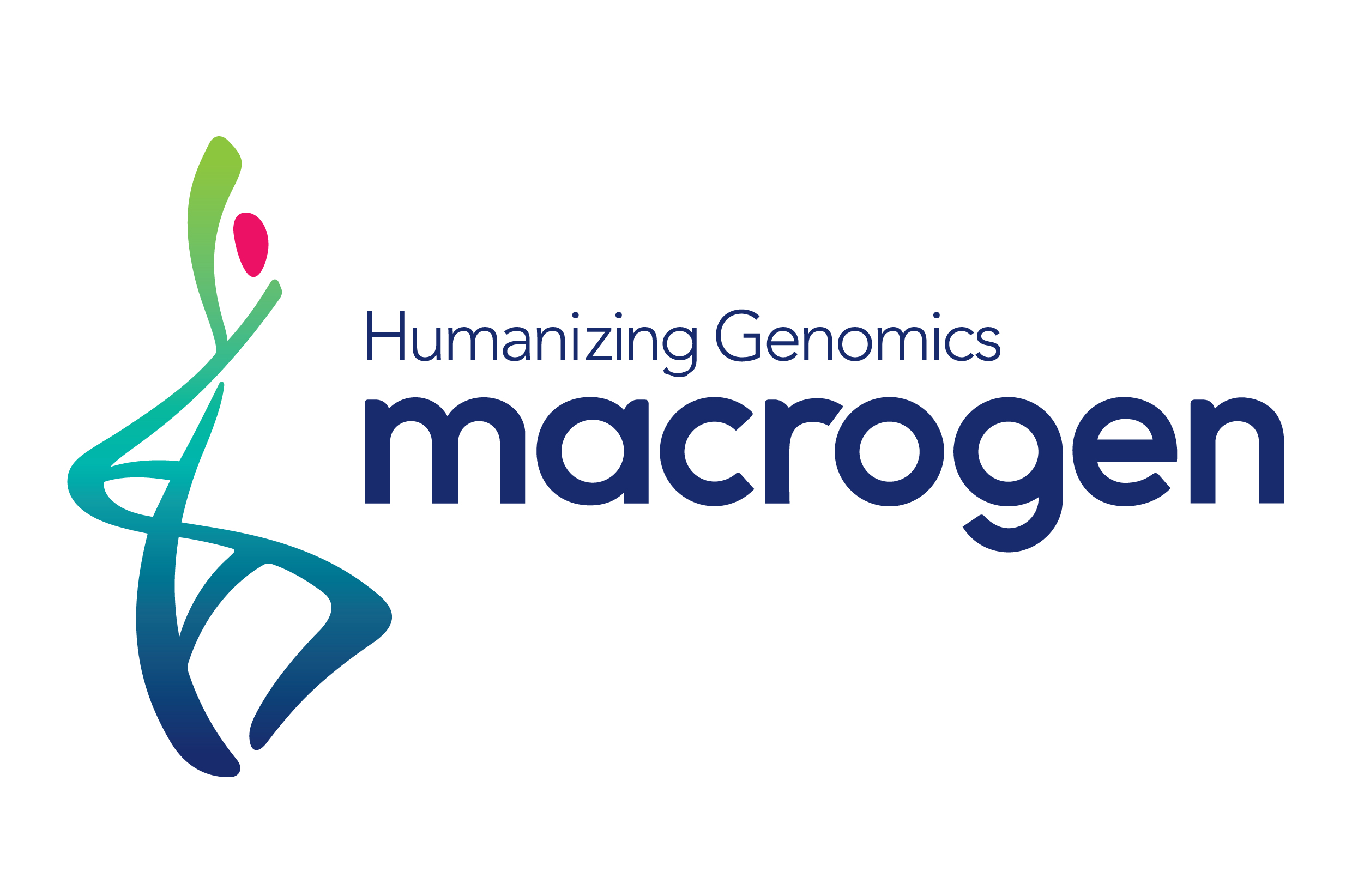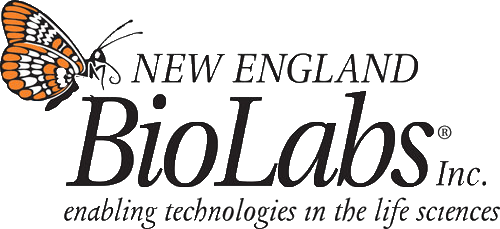Difference between revisions of "Team:DTU-Denmark/Project/Chip"
| Line 137: | Line 137: | ||
<li > | <li > | ||
<a href="/Team:DTU-Denmark/Project/POC_MAGE" | <a href="/Team:DTU-Denmark/Project/POC_MAGE" | ||
| − | > | + | >Proof of concept of MAGE in B. subtilis |
</a></li></ul></li> | </a></li></ul></li> | ||
<li > | <li > | ||
| Line 314: | Line 314: | ||
Lab-on-a-disc Screening | Lab-on-a-disc Screening | ||
</h1> | </h1> | ||
| − | <p | + | <p>The results we have described so far have been focussing on developing libraries of nonribosomal peptides (NRP), but we have yet not described how these libraries may be screened. High throughput screening is essential to couple MAGE to improved drug design. In the laboratory, we have worked with tyrothricin, tyrocidine, and surfactins. They are all NRP antibiotics, which are cytotoxic to red blood cells [1][2][3]. In our first generation screening experiments, we tested if we could use this property to screen NRP libraries for reduced cytotoxicity.</p> |
</div> | </div> | ||
| Line 327: | Line 327: | ||
Achievements | Achievements | ||
</h1> | </h1> | ||
| − | + | <ul> | |
| − | + | <li>UV-vis absorbance spectra proved that red blood cells are lysed in presence of certain NRP. The experiments should be repeated with fresh blood cells, but they show that</li> | |
| − | <ul> | + | <li>Proof of concept on a lab-on-a-disc could be achieved.</li> |
| − | <li | + | |
| − | <li | + | |
</ul> | </ul> | ||
| Line 345: | Line 343: | ||
Background | Background | ||
</h1> | </h1> | ||
| − | <p style="text-align: justify;">Certain groups of | + | <p style="text-align: justify;">Certain groups of nonribosomal peptides including commonly used antibiotics tyrothricin, tyrocidine, and surfactins, display non-specific cytotoxicity [1][2][3]. For this reason, these antibiotics are commonly used on external surfaces or topically as intravascular injection that causes hemolysis of red blood cells [1]. Low concentrations of NRP antibiotics have been fatal to animal model under some conditions which further supports the need for an <em>in-vitro</em> screening. UV-Vis absorbance spectrum depicts the amount of light absorbed by a measured solution or compounds included in a sample. The absorbance spectra of red blood cells from 300-800 nm changes depending on the state of the red blood cells. [4][5]</p> |
| − | + | ||
| − | + | ||
</div> | </div> | ||
| Line 360: | Line 356: | ||
Methods | Methods | ||
</h1> | </h1> | ||
| − | <p style="text-align: justify;">To study cell lysis, the absorbance of fresh blood cells | + | <p style="text-align: justify;">To study cell lysis, the absorbance of fresh blood cells spiked with the addition of nonribosomal peptides was measured. UV-Vis absorption spectra was recorded between 300-800nm using three different divices: in cuvettes, by nanodrop, and on a DS-11 + Spectrophotometer (DeNovix). The concentration of NRP was varied between samples to determine cytotoxicity of tyrothricin and sensitivity of red blood cells. A detailed <a href="/wiki/images/6/62/DTU-Denmark_bloodcell_lysis.pdf" onclick="window.open(this.href, '', 'resizable=no,status=no,location=no,toolbar=no,menubar=no,fullscreen=no,scrollbars=no,dependent=no'); return false;">description</a> of the experiments can be found under <a href="/Team:DTU-Denmark/Journal">Lab NoteBook</a>.</p> |
</div> | </div> | ||
| Line 373: | Line 369: | ||
Results | Results | ||
</h1> | </h1> | ||
| − | <p style="text-align: justify;">The UV- | + | <p style="text-align: justify;">The UV-Vis absorption spectra of red blood cells suspended in the absence or presence of antibiotic (Figure 1) proves toxicity of tyrothrycin towards blood cells. The drop of the green curve around 600nm indicates that red blood cells absorbs less at this wavelength. When the curve reaches 0, it is an indentication of cell lysis.<br /> |
</p> | </p> | ||
| Line 382: | Line 378: | ||
green line: blood cells anticoagulated in heparin with unknown concentration of Tyrothrycin; lysed</em></span><span style="font-size:14px;"></span></p> | green line: blood cells anticoagulated in heparin with unknown concentration of Tyrothrycin; lysed</em></span><span style="font-size:14px;"></span></p> | ||
| − | <p style="text-align: justify;">Decrease of UV absorbance around 600nm occurred in all of the blood samples with tyrothricin (Figure 2 | + | <p style="text-align: justify;">Decrease of UV absorbance around 600nm occurred in all of the blood samples with tyrothricin indicating lysis of the sample (Figure 2).</p> |
<p style="text-align: center;"><img alt="" src="/wiki/images/b/ba/DTU-Denmark_disc_exp1_tyr.jpg" style="width: 350px; height: 238px;" /></p> | <p style="text-align: center;"><img alt="" src="/wiki/images/b/ba/DTU-Denmark_disc_exp1_tyr.jpg" style="width: 350px; height: 238px;" /></p> | ||
| − | <p align="center"><span style="font-size:14px;">Figure 2. Comparison of blood cells in presence of | + | <p align="center"><span style="font-size:14px;">Figure 2. Comparison of blood cells in presence of antibiotics over time. </span><span style="font-size:12px;"><br /> |
<em>pink and black line : unknown concentration of Tyrothrycin measured after 30sec with blood cells anticoagulated in heparin; green line: unknown concentration of Tyrothrycin measured after 120sec with blood cells anticoagulated in heparin.</em></span></p> | <em>pink and black line : unknown concentration of Tyrothrycin measured after 30sec with blood cells anticoagulated in heparin; green line: unknown concentration of Tyrothrycin measured after 120sec with blood cells anticoagulated in heparin.</em></span></p> | ||
| − | <p style="text-align: justify;"> | + | <p style="text-align: justify;">Nanodrop measurements of red blood cells spiked with tyrothricin at different concentration:</p> |
<p style="text-align: center;"><img alt="" src="None" style="width: 550px; height: 255px;" /></p> | <p style="text-align: center;"><img alt="" src="None" style="width: 550px; height: 255px;" /></p> | ||
| Line 395: | Line 391: | ||
<p style="text-align: center;"><span style="font-size:14px;">Figure 3. Comparison of blood cells (anticoagulated with heparin) in presence of 0,15M NaCl and different concentrations of tyrothricin after 45-60sec of incubation. Nanodrop measurement.</span></p> | <p style="text-align: center;"><span style="font-size:14px;">Figure 3. Comparison of blood cells (anticoagulated with heparin) in presence of 0,15M NaCl and different concentrations of tyrothricin after 45-60sec of incubation. Nanodrop measurement.</span></p> | ||
| − | <p style="text-align: justify;"> | + | <p style="text-align: justify;">In all samples, incomplete cell lysis was observed (Figure 3). The lysis may be imcomplete due to the shorten incubation time of 45-60 seconds. The blood sample resuspended in 0.15M NaCl also shows turbidity at 600-700nm, despite it being an isotonic solution. The partly cell lysis may be explained by either the pipette tip bursting the cells (mechanical forces) or due to hemolysis of the cells. The blood cells were at the point tested three days old, which may lead to burstingv[5]. We can conclude that the antibiotic lyses the red blood cells, but we cannot determine its specificity very accurately.</p> |
| − | <p style="text-align: justify;"> | + | <p style="text-align: justify;">It was also possible to test lysis of red blood cells using an extract from <em>Brevibacillus parabrevis </em>(Figure 4). Prescence of tyrocidine was confirmed by LC/MS and MALDI-TOF prior to the blood cell analysis. It is of interest to see, if cell extracts alone can be used to screen for cytotoxicity as it is easy to prepare cell extractions.</p> |
<p style="text-align: center;"><img alt="" src="/wiki/images/3/36/DTU-Denmark_exp_3.jpg" style="width: 550px; height: 257px;" /></p> | <p style="text-align: center;"><img alt="" src="/wiki/images/3/36/DTU-Denmark_exp_3.jpg" style="width: 550px; height: 257px;" /></p> | ||
| Line 403: | Line 399: | ||
<p align="center"><span style="font-size:14px;">Figure 4. UV-vis absorption spectra of blood anticoagulated with heparin in presence of unknown concentrations of tyrocidine after 45-60sec of incubation. Nanodrop measurement.</span></p> | <p align="center"><span style="font-size:14px;">Figure 4. UV-vis absorption spectra of blood anticoagulated with heparin in presence of unknown concentrations of tyrocidine after 45-60sec of incubation. Nanodrop measurement.</span></p> | ||
| − | <p style="text-align: justify;">In this experiment cell lysis is also observed in all samples. The control sample should retain blood cell stability, | + | <p style="text-align: justify;">In this experiment, cell lysis is also observed in all samples as with the standard. The control sample should retain blood cell stability, yet it did not. This may be due to the same factors as previously discussed. The data shows that further experiments are required to confirm cell lysis across samples. The high peaks of a few samples might suggest complete cell lysis is due to the presence of antibiotics.</p> |
</div> | </div> | ||
| Line 416: | Line 412: | ||
Discussion | Discussion | ||
</h1> | </h1> | ||
| − | <p style="text-align: justify;"> | + | <p style="text-align: justify;">The results indicates, despite their uncertainity, that screening of on blood samples can be used as method for screening. Litterature supports lab-on-a-disc screening as having strong potential to be a low-cost, quick, and simple way of detect and screening libraries of NRP antibiotics. For this reason, we have described the basis of a lab-on-disc device.</p> |
</div> | </div> | ||
| Line 429: | Line 425: | ||
Concept of lab-on-a-disc | Concept of lab-on-a-disc | ||
</h1> | </h1> | ||
| − | <p style="text-align: justify;">The rotating disc would be an easy and low-cost way to screen | + | <p style="text-align: justify;">The rotating disc would be an easy and low-cost way to screen bacterial colonies. Our inspiration came from the start-up company BluSense Diagnostics, who specialise within microfluidics and rotor devices. The rotor disc would enable visual screening (detection) of bacterial colonies by mixing both small volumes of red blood cells and supernatants of bacterial culture. The primary idea of the disc would enable us to screen five different colonies at the same time. Figure 5., below, displays a simple set-up of lab-on-a-disc device.</p> |
| − | + | ||
| − | + | ||
<p style="text-align: center;"><img alt="" src="None" style="width: 350px; height: 239px;" /></p> | <p style="text-align: center;"><img alt="" src="None" style="width: 350px; height: 239px;" /></p> | ||
| Line 437: | Line 431: | ||
<p align="center"><span style="font-size:14px;">Figure 5. Illustration of lab-on-a-chip concept for screening the MAGE products.</span></p> | <p align="center"><span style="font-size:14px;">Figure 5. Illustration of lab-on-a-chip concept for screening the MAGE products.</span></p> | ||
| − | <p style="text-align: justify;">The use of the disc for observing cell lysis is very easy (Figure 5.). According to methods used in BluSense Diagnostics, it consists of a few steps. First, loading the bacterial supernatant and blood volume to specific inlets (Figure 6 | + | <p style="text-align: justify;">The use of the disc for observing cell lysis is very easy (Figure 5.). According to methods used in BluSense Diagnostics, it consists of a few steps. First, loading the bacterial supernatant and blood volume to specific inlets (Figure 6). When the disc starts to rotate, the bacterial supernatant is moved to the mixing/detection chamber where a certain volume of the blood sample is measured out and then moved (with the next rotation) to a mixing chamber, where it is mixed with bacterial supernatant (Figure 7.A). Subsequently, the disc stops rotating, before again beginning to accelerate and decelerate for a certain time period to mix the fluid (Figure 7.B). The disc stops and after a certain time period, the blood cells can be analysed by UV-Vis as described earlier to determine, if the sample contains cytotoxic antibiotics.</p> |
<p align="center"><img alt="" src="/wiki/images/5/5e/DTU-Denmark_lab_on_a_disc_.jpg" style="width: 350px; height: 400px;" /></p> | <p align="center"><img alt="" src="/wiki/images/5/5e/DTU-Denmark_lab_on_a_disc_.jpg" style="width: 350px; height: 400px;" /></p> | ||
| Line 449: | Line 443: | ||
Pictures provided by BluSense Diagnostics.</span></p> | Pictures provided by BluSense Diagnostics.</span></p> | ||
| − | <p style="text-align: justify;"> | + | <p style="text-align: justify;">Further investigation is still required to determine: sensitivity the test, the interaction between bacterial supernatant-red blood cells, the most efficient method of extraction of NRPs for screening, and optimization parameters for mixing and microflow within the disc. However, it is very likely that this design would be a applicable screening method for MAGE. </p> |
<p> </p> | <p> </p> | ||
| Line 471: | Line 465: | ||
<li>Pape W. J., Pfannenbecker U., Hoppe U. (1987-1988 Fall) Validation of the red blood cell test system as in vitro assay for the rapid screening of irritation potential of surfactants.Mol Toxicol.;1(4):525-36</li> | <li>Pape W. J., Pfannenbecker U., Hoppe U. (1987-1988 Fall) Validation of the red blood cell test system as in vitro assay for the rapid screening of irritation potential of surfactants.Mol Toxicol.;1(4):525-36</li> | ||
| − | |||
| − | |||
<li>Jiang, N., Tan, N. S., Ho, B., & Ding, J. L. (2007). Measurement of the red blood cell lysis by bacterial hemolysin. Protocol Exchange. <a href="http://dx.doi.org/10.1038/nprot.2007.483" target="_blank">doi:10.1038/nprot.2007.483</a></li> | <li>Jiang, N., Tan, N. S., Ho, B., & Ding, J. L. (2007). Measurement of the red blood cell lysis by bacterial hemolysin. Protocol Exchange. <a href="http://dx.doi.org/10.1038/nprot.2007.483" target="_blank">doi:10.1038/nprot.2007.483</a></li> | ||
Revision as of 01:13, 19 September 2015
Lab-on-a-disc Screening
The results we have described so far have been focussing on developing libraries of nonribosomal peptides (NRP), but we have yet not described how these libraries may be screened. High throughput screening is essential to couple MAGE to improved drug design. In the laboratory, we have worked with tyrothricin, tyrocidine, and surfactins. They are all NRP antibiotics, which are cytotoxic to red blood cells [1][2][3]. In our first generation screening experiments, we tested if we could use this property to screen NRP libraries for reduced cytotoxicity.
Achievements
- UV-vis absorbance spectra proved that red blood cells are lysed in presence of certain NRP. The experiments should be repeated with fresh blood cells, but they show that
- Proof of concept on a lab-on-a-disc could be achieved.
Background
Certain groups of nonribosomal peptides including commonly used antibiotics tyrothricin, tyrocidine, and surfactins, display non-specific cytotoxicity [1][2][3]. For this reason, these antibiotics are commonly used on external surfaces or topically as intravascular injection that causes hemolysis of red blood cells [1]. Low concentrations of NRP antibiotics have been fatal to animal model under some conditions which further supports the need for an in-vitro screening. UV-Vis absorbance spectrum depicts the amount of light absorbed by a measured solution or compounds included in a sample. The absorbance spectra of red blood cells from 300-800 nm changes depending on the state of the red blood cells. [4][5]
Methods
To study cell lysis, the absorbance of fresh blood cells spiked with the addition of nonribosomal peptides was measured. UV-Vis absorption spectra was recorded between 300-800nm using three different divices: in cuvettes, by nanodrop, and on a DS-11 + Spectrophotometer (DeNovix). The concentration of NRP was varied between samples to determine cytotoxicity of tyrothricin and sensitivity of red blood cells. A detailed description of the experiments can be found under Lab NoteBook.
Results
The UV-Vis absorption spectra of red blood cells suspended in the absence or presence of antibiotic (Figure 1) proves toxicity of tyrothrycin towards blood cells. The drop of the green curve around 600nm indicates that red blood cells absorbs less at this wavelength. When the curve reaches 0, it is an indentication of cell lysis.

Figure 1. Comparison of blood cells in different buffers.
grey line: blood cells anticoagulated in heparin with 0.15M NaCl; non-lysed
green line: blood cells anticoagulated in heparin with unknown concentration of Tyrothrycin; lysed
Decrease of UV absorbance around 600nm occurred in all of the blood samples with tyrothricin indicating lysis of the sample (Figure 2).

Figure 2. Comparison of blood cells in presence of antibiotics over time.
pink and black line : unknown concentration of Tyrothrycin measured after 30sec with blood cells anticoagulated in heparin; green line: unknown concentration of Tyrothrycin measured after 120sec with blood cells anticoagulated in heparin.
Nanodrop measurements of red blood cells spiked with tyrothricin at different concentration:
Figure 3. Comparison of blood cells (anticoagulated with heparin) in presence of 0,15M NaCl and different concentrations of tyrothricin after 45-60sec of incubation. Nanodrop measurement.
In all samples, incomplete cell lysis was observed (Figure 3). The lysis may be imcomplete due to the shorten incubation time of 45-60 seconds. The blood sample resuspended in 0.15M NaCl also shows turbidity at 600-700nm, despite it being an isotonic solution. The partly cell lysis may be explained by either the pipette tip bursting the cells (mechanical forces) or due to hemolysis of the cells. The blood cells were at the point tested three days old, which may lead to burstingv[5]. We can conclude that the antibiotic lyses the red blood cells, but we cannot determine its specificity very accurately.
It was also possible to test lysis of red blood cells using an extract from Brevibacillus parabrevis (Figure 4). Prescence of tyrocidine was confirmed by LC/MS and MALDI-TOF prior to the blood cell analysis. It is of interest to see, if cell extracts alone can be used to screen for cytotoxicity as it is easy to prepare cell extractions.

Figure 4. UV-vis absorption spectra of blood anticoagulated with heparin in presence of unknown concentrations of tyrocidine after 45-60sec of incubation. Nanodrop measurement.
In this experiment, cell lysis is also observed in all samples as with the standard. The control sample should retain blood cell stability, yet it did not. This may be due to the same factors as previously discussed. The data shows that further experiments are required to confirm cell lysis across samples. The high peaks of a few samples might suggest complete cell lysis is due to the presence of antibiotics.
Discussion
The results indicates, despite their uncertainity, that screening of on blood samples can be used as method for screening. Litterature supports lab-on-a-disc screening as having strong potential to be a low-cost, quick, and simple way of detect and screening libraries of NRP antibiotics. For this reason, we have described the basis of a lab-on-disc device.
Concept of lab-on-a-disc
The rotating disc would be an easy and low-cost way to screen bacterial colonies. Our inspiration came from the start-up company BluSense Diagnostics, who specialise within microfluidics and rotor devices. The rotor disc would enable visual screening (detection) of bacterial colonies by mixing both small volumes of red blood cells and supernatants of bacterial culture. The primary idea of the disc would enable us to screen five different colonies at the same time. Figure 5., below, displays a simple set-up of lab-on-a-disc device.
Figure 5. Illustration of lab-on-a-chip concept for screening the MAGE products.
The use of the disc for observing cell lysis is very easy (Figure 5.). According to methods used in BluSense Diagnostics, it consists of a few steps. First, loading the bacterial supernatant and blood volume to specific inlets (Figure 6). When the disc starts to rotate, the bacterial supernatant is moved to the mixing/detection chamber where a certain volume of the blood sample is measured out and then moved (with the next rotation) to a mixing chamber, where it is mixed with bacterial supernatant (Figure 7.A). Subsequently, the disc stops rotating, before again beginning to accelerate and decelerate for a certain time period to mix the fluid (Figure 7.B). The disc stops and after a certain time period, the blood cells can be analysed by UV-Vis as described earlier to determine, if the sample contains cytotoxic antibiotics.

Figure 6. Visual presentation of an original disc design. Disc provided by BluSense Diagnostics.

Figure 7. Visualisation of rotations influencing samples’ microflow.
A)Two different solutions are transferred to the mixing chamber. B) Mixture after several rotations of the disc. C) Visible cell lysis.
Pictures provided by BluSense Diagnostics.
Further investigation is still required to determine: sensitivity the test, the interaction between bacterial supernatant-red blood cells, the most efficient method of extraction of NRPs for screening, and optimization parameters for mixing and microflow within the disc. However, it is very likely that this design would be a applicable screening method for MAGE.
References
- Dubos, R. J. (1941). THE PRODUCTION OF BACTERICIDAL SUBSTANCES BY AEROBIC SPORULATING BACILLI. Journal of Experimental Medicine, 73(5), 629–640. doi:10.1084/jem.73.5.629
- Findlay R. D., Taeusch H. W., David-Cu R., Walther F. J., Pediatr Res., Lysis of red blood cells and alveolar epithelial toxicity by therapeutic pulmonary surfactants.(1995); 37(1):26-30.
- Pape W. J., Pfannenbecker U., Hoppe U. (1987-1988 Fall) Validation of the red blood cell test system as in vitro assay for the rapid screening of irritation potential of surfactants.Mol Toxicol.;1(4):525-36
- Jiang, N., Tan, N. S., Ho, B., & Ding, J. L. (2007). Measurement of the red blood cell lysis by bacterial hemolysin. Protocol Exchange. doi:10.1038/nprot.2007.483
- Jávorfi T., Erostyák J., Gál J., Buzády A., Menczel L., Garab G., Razi Naqvi K. J. Photochem Photobiol B. (2006) Quantitative spectrophotometry using integrating cavities. 82(2):127-31. Epub 2005 Nov
Department of Systems Biology
Søltofts Plads 221
2800 Kgs. Lyngby
Denmark
P: +45 45 25 25 25
M: dtu-igem-2015@googlegroups.com












